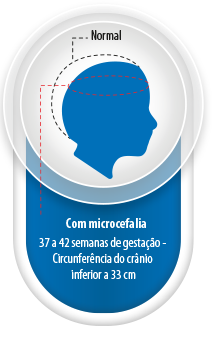The number of suspect microcephaly cases have increased to nearly 3,900 in 764 municipalities in 21 Brazilian states through Jan. 16, according to Brazilian health officials (computer translated).

According to the report, the state of Pernambuco continues with the highest number of suspected cases (1,306), representing 33% of total registered across the country. Next are the states of Paraíba (665), Bahia (496), Ceará (216), Rio Grande do Norte (188), Sergipe (164), Alagoas (158), Mato Grosso (134) and Rio de Janeiro ( 122).
Health officials say that a total of 49 reported deaths were due to the congenital malformation. Five have been confirmed to have a link to the Zika virus, all in the Northeast– one in Ceará and four in Rio Grande do Norte. Additionally, the release also brings the laboratory investigation of a baby with microcephaly in Minas Gerais, which had the relationship with Zika diagnosed. This is the sixth confirmed the relationship of disease with the virus. These results add to the other scientific evidence obtained in 2015 and reinforce the hypothesis relationship between the Zika virus infection and the occurrence of microcephaly and other congenital malformations.
Some estimates put the locally acquired Zika infection total at 1.5 million.
This has prompted Brazilian health authorities to ramp up the availability of laboratory diagnosis. The Ministry of Health will distribute 500,000 tests to perform diagnostic PCR (molecular biology) for Zika virus. As a result, public laboratories will expand 20 times the capacity, from 1,000 to 20,000 tests per month. The first 250,000 units will be delivered in February, initially for 27 laboratories, four of reference and 23 Central Laboratories of Public Health (LACEN).
“The expansion of the Zika testing capacity will allow greater representation and security so that trends of the virus can be studied. The more samples that are analyzed weekly, the more information will be available assess the Zika surveillance model and thus make adaptations if necessary”, said Claudio Maierovitch, director of the Department of Surveillance of Communicable Diseases of the Ministry of Health.
Related:
- Oxitec to expand ‘Friendly Aedes aegypti Project’ in Brazil
- Illinois: Zika virus confirmed in two pregnant residents
- Zika virus reported in Bolivia and Guadeloupe
- Florida reports three imported Zika virus cases


2 thoughts on “Brazil: More microcephaly cases, Zika lab testing capacity increased”